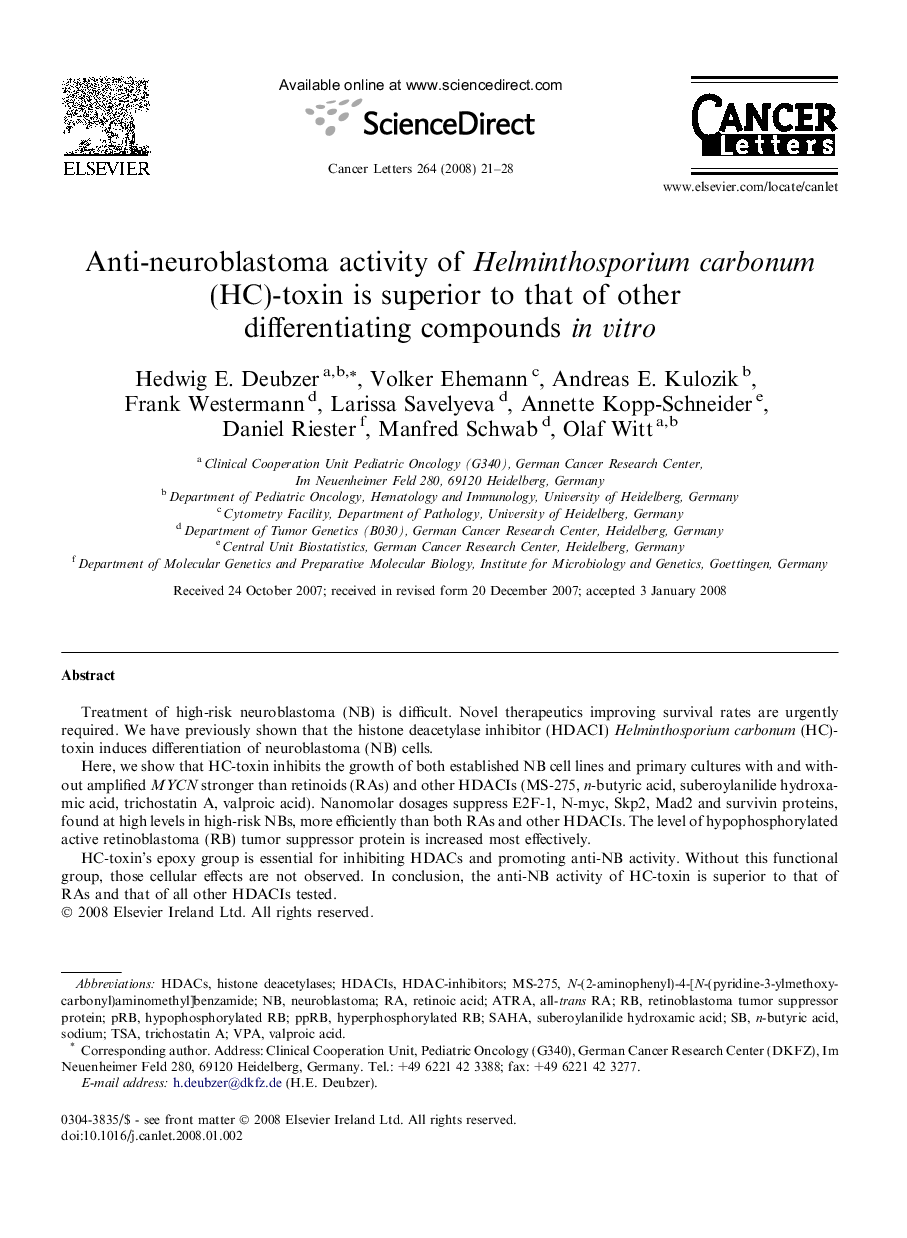| Article ID | Journal | Published Year | Pages | File Type |
|---|---|---|---|---|
| 2115038 | Cancer Letters | 2008 | 8 Pages |
Treatment of high-risk neuroblastoma (NB) is difficult. Novel therapeutics improving survival rates are urgently required. We have previously shown that the histone deacetylase inhibitor (HDACI) Helminthosporium carbonum (HC)-toxin induces differentiation of neuroblastoma (NB) cells.Here, we show that HC-toxin inhibits the growth of both established NB cell lines and primary cultures with and without amplified MYCN stronger than retinoids (RAs) and other HDACIs (MS-275, n-butyric acid, suberoylanilide hydroxamic acid, trichostatin A, valproic acid). Nanomolar dosages suppress E2F-1, N-myc, Skp2, Mad2 and survivin proteins, found at high levels in high-risk NBs, more efficiently than both RAs and other HDACIs. The level of hypophosphorylated active retinoblastoma (RB) tumor suppressor protein is increased most effectively.HC-toxin’s epoxy group is essential for inhibiting HDACs and promoting anti-NB activity. Without this functional group, those cellular effects are not observed. In conclusion, the anti-NB activity of HC-toxin is superior to that of RAs and that of all other HDACIs tested.
